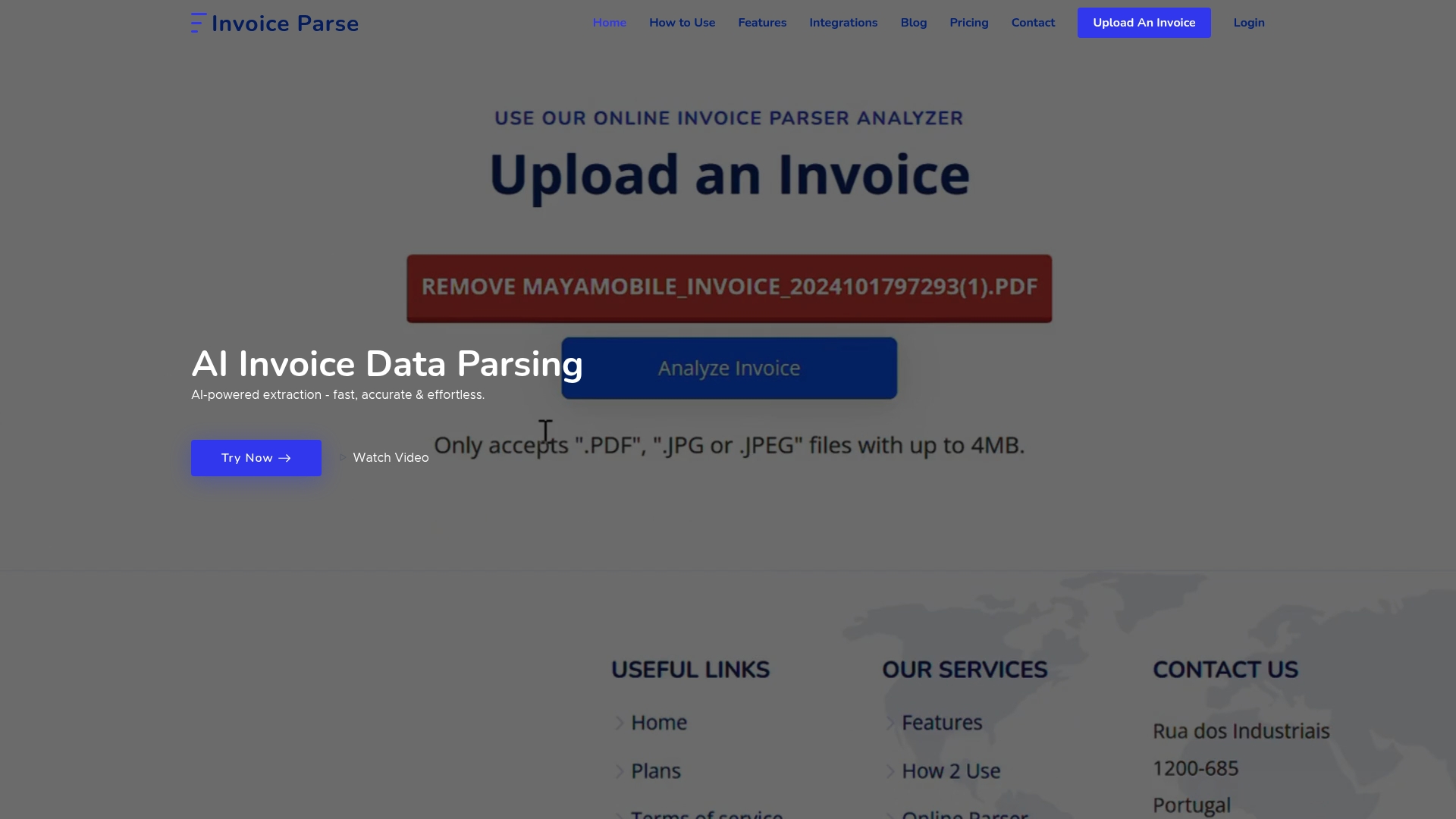Did you know that almost 60 percent of business owners struggle to organize and analyze their financial records correctly? Getting your finances in order is often the difference between confident decision making and costly mistakes. With the right approach, turning paperwork and raw numbers into clear, actionable insights becomes much easier and leads to smarter choices for your financial future.

How to Read Financial Statements for Accurate Analysis
Quick Summary
| Key Point | Explanation |
|---|---|
| 1. Collect essential financial documents | Gather all key documents like balance sheet and income statement. Accurate records form the foundation for analysis. |
![]() |
| 2. Understand key financial statement components | Learn the main elements of each statement to gain insight into financial health, such as revenue and liabilities. |
| 3. Analyze figures using financial ratios | Use profitability, liquidity, and efficiency ratios to interpret performance and compare with industry standards. |
| 4. Ensure data consistency across statements | Verify that information matches across financial documents to identify discrepancies and maintain data integrity. |
| 5. Export insights into reporting tools | Utilize tools like Excel and Power BI to create visual representations of data for easier understanding and decision-making. |
|
| 2. Understand key financial statement components | Learn the main elements of each statement to gain insight into financial health, such as revenue and liabilities. |
| 3. Analyze figures using financial ratios | Use profitability, liquidity, and efficiency ratios to interpret performance and compare with industry standards. |
| 4. Ensure data consistency across statements | Verify that information matches across financial documents to identify discrepancies and maintain data integrity. |
| 5. Export insights into reporting tools | Utilize tools like Excel and Power BI to create visual representations of data for easier understanding and decision-making. |
Table of Contents
- Step 1: Collect Essential Financial Documents For Review
- Step 2: Identify Key Components In Each Financial Statement
- Step 3: Analyze Figures Using Standard Financial Ratios
- Step 4: Verify Data Consistency Across Statements
- Step 5: Export And Integrate Key Insights Into Reporting Tools
Step 1: Collect essential financial documents for review
The first step in conducting an accurate financial analysis is gathering all relevant documents that provide a comprehensive view of your financial landscape. In this stage, you will systematically compile key financial records that serve as the foundation for your detailed review.
Start by creating a comprehensive checklist of essential financial documents. These typically include:
- Balance Sheet: Your snapshot of assets, liabilities, and shareholders’ equity
- Income Statement: Detailing revenue, expenses, and profitability
- Cash Flow Statement: Tracking cash movements and liquidity
- Tax Returns: Both personal and business returns for the past three years
- Bank Statements: Monthly or quarterly statements from all financial accounts
- Investment Account Statements: Showing current holdings and performance
- Accounts Receivable and Payable Reports: Understanding current financial obligations
Organization is key when collecting these documents. Create a digital folder system or use a secure cloud storage platform to maintain an orderly archive. For physical documents, consider a locked file cabinet with clear, labeled sections.
Pro Tip: Digitize your physical documents by scanning them with high resolution. This creates a backup and makes searching and sharing easier.
If you work with an accountant or financial advisor, request they provide copies of documents you might have missed. Understanding financial audit preparation can help you identify any potential gaps in your document collection.
Remember that completeness and accuracy are crucial. Missing or incomplete documents can lead to flawed analysis and potential financial misunderstandings. Take your time to ensure you have gathered everything needed before moving to the next stage of financial statement review.
Step 2: Identify key components in each financial statement
In this crucial step, you will learn how to dissect and understand the core components of financial statements. According to the Corporate Finance Institute, each financial statement reveals critical information about a company’s financial health.
Let’s break down the key components for each primary financial statement:
Here’s a summary of the key financial statement components:
| Statement | Main Components | Purpose |
|---|---|---|
| Balance Sheet | Assets Liabilities Shareholders’ Equity |
Snapshot of financial position |
| Income Statement | Revenue Expenses Net Income Operating Income |
Measures profitability and performance |
| Cash Flow Statement | Operating Cash Flow Investing Cash Flow Financing Cash Flow |
Tracks cash inflows and outflows |
Balance Sheet Components
- Assets: What the company owns (cash, inventory, equipment)
- Liabilities: What the company owes (loans, accounts payable)
- Shareholders’ Equity: The net value of the company after subtracting liabilities from assets
Income Statement Components
- Revenue: Total money earned from sales and services
- Expenses: Costs of doing business (salaries, rent, materials)
- Net Income: Profit calculated by subtracting expenses from revenue
- Operating Income: Earnings from core business activities
Cash Flow Statement Components
- Operating Cash Flow: Money generated from core business operations
- Investing Cash Flow: Cash used or received from investment activities
- Financing Cash Flow: Money related to debt, equity, and dividend transactions
Pro Tip: When reviewing these statements, look for trends and unusual fluctuations that might indicate financial strengths or potential challenges.
To gain a deeper understanding of these terms, review our guide on understanding basic accounting terms, which can help clarify complex financial language.
By mastering these key components, you will develop a comprehensive view of a company’s financial performance and position. Each statement provides a unique perspective that, when analyzed together, offers powerful insights into financial health.

Step 3: Analyze figures using standard financial ratios
In this critical step, you will transform raw financial numbers into meaningful insights by applying standard financial ratios. These mathematical calculations help you understand a company’s financial performance beyond simple number reading.
Let’s explore the most important financial ratios grouped by their analytical purpose:
Profitability Ratios:
- Net Profit Margin: Shows percentage of revenue converted into actual profit
- Return on Assets: Measures how efficiently a company uses its assets to generate earnings
- Return on Equity: Indicates how effectively management is using shareholders’ investments
Liquidity Ratios:
- Current Ratio: Assesses a company’s ability to pay short term obligations
- Quick Ratio: Measures immediate cash availability to cover urgent liabilities
- Cash Ratio: Evaluates most liquid assets against current financial responsibilities
Efficiency Ratios:
- Asset Turnover Ratio: Calculates how well a company uses its assets to generate sales
- Inventory Turnover: Shows how quickly a company sells and replaces inventory
- Receivables Turnover: Measures how effectively a company collects outstanding payments
Pro Tip: Always compare ratios against industry benchmarks and the company’s historical performance for meaningful analysis.
To gain deeper insights into financial performance metrics, explore our guide on understanding finance department KPIs which provides additional context for these calculations.
By systematically applying these ratios, you transform complex financial data into clear, actionable intelligence about a company’s financial health and potential future performance.
Step 4: Verify data consistency across statements
In this critical step, you will become a financial detective tracking the interconnected story told by different financial statements. Ensuring data consistency is like solving a complex puzzle where each statement must align perfectly with the others.
Begin by cross referencing key financial elements across your three primary statements:
Balance Sheet and Income Statement Connections:
- Net Income from the Income Statement should match Retained Earnings on the Balance Sheet
- Total Assets must equal Total Liabilities plus Shareholders’ Equity
- Depreciation expenses on the Income Statement should correlate with accumulated depreciation on the Balance Sheet
Balance Sheet and Cash Flow Statement Linkages:
- Changes in asset and liability accounts should match cash flow movements
- Beginning and ending cash balances must reconcile between statements
- Non cash transactions like asset purchases or stock issuances require careful tracking
Interconnected Verification Points:
- Trace revenue recognition patterns
- Match expense categories across statements
- Confirm investment and financing activities align
- Validate tax calculations and provisions
Pro Tip: Small discrepancies can signal potential accounting errors or more serious financial reporting issues.
To enhance your understanding of financial document management, explore our guide on understanding financial document management which provides deeper insights into consistent financial reporting.
By meticulously verifying data consistency, you transform financial statements from isolated documents into a comprehensive narrative of a company’s financial performance and integrity.
Step 5: Export and integrate key insights into reporting tools
In this final step, you will transform your financial analysis into actionable visual representations that communicate complex insights quickly and effectively. The goal is to convert raw financial data into compelling narratives that drive strategic decision making.
Popular reporting tools for financial data integration include:
Spreadsheet Tools:
- Microsoft Excel
- Google Sheets
- Apple Numbers
Business Intelligence Platforms:
- Power BI
- Tableau
- Looker
- Google Data Studio
Key steps for seamless data export and integration:
- Select export formats compatible with your reporting tool (CSV, XLSX)
- Clean and standardize data before importing
- Map financial statement columns correctly
- Validate data integrity post import
- Create dynamic visualizations
Pro Tip: Always maintain a backup of original financial documents before performing any data transformations.
To optimize your data visualization process, review our guide on data visualization in finance which provides advanced techniques for presenting financial information effectively.
By mastering these export and integration techniques, you convert complex financial statements into clear visual stories that stakeholders can understand and act upon instantly.
Struggling to Extract Key Data for Accurate Financial Analysis?
If you ever felt overwhelmed by missing details, manual errors, or the sheer time required to organize financial data for a thorough statement review, you are not alone. As highlighted in our guide, the accuracy and speed of your analysis depend entirely on how complete, organized, and reliable your source documents are. Searching for critical fields in piles of invoices or worrying about data gaps can turn your financial analysis process into a source of stress. Now is the moment to remove these pain points and make your reporting effortless.

Make the smart move to Invoice Parse and let AI handle the heavy lifting. Our platform instantly extracts data like vendor names, totals, and line items from invoices and delivers structured results you can trust. With support for real-time exports to tools like spreadsheets or Power BI, Invoice Parse completes the workflow discussed in how to integrate key insights into reporting tools. Give yourself an edge by registering for an account today and experience how easy accurate, scalable data extraction can be when you have the right technology. Visit our home page now and take the first step toward flawless financial statement analysis.
Frequently Asked Questions
What essential financial documents do I need to gather for accurate analysis?
To conduct an accurate financial analysis, you need to collect a balance sheet, income statement, cash flow statement, tax returns, bank statements, investment account statements, and accounts receivable/payable reports. Start by creating a comprehensive checklist to ensure no documents are overlooked.
How can I identify key components within each financial statement?
You can identify key components by breaking down each statement into its main parts. For the balance sheet, focus on assets, liabilities, and shareholders’ equity; for the income statement, look for revenue, expenses, net income, and operating income; and for the cash flow statement, examine operating, investing, and financing cash flows.
What financial ratios should I analyze for a complete understanding of financial health?
You should analyze profitability ratios (like net profit margin), liquidity ratios (such as current ratio), and efficiency ratios (like inventory turnover). Calculate these ratios to gain insights into financial performance; for example, you can assess the net profit margin by dividing net income by total revenue to understand profit per sales dollar.
How do I verify data consistency across different financial statements?
To verify data consistency, cross-reference key elements such as net income from the income statement with retained earnings on the balance sheet. Ensure that total assets equal total liabilities plus shareholders’ equity; review these figures closely to identify any discrepancies in your reporting.
What are the steps to export and integrate financial data into reporting tools?
Begin by selecting export formats compatible with your reporting tool, like CSV or XLSX, then clean and standardize your financial data. Map the financial statement columns correctly and validate data integrity post-import to ensure your visualizations accurately represent the data.
How can I present my financial analysis insights visually?
You can present your financial analysis insights by using spreadsheet tools or business intelligence platforms to create dynamic visualizations. For a clear presentation, transform raw data into graphs and charts that highlight key findings, making it easier for stakeholders to understand and make informed decisions.
